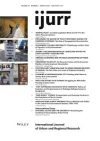This paper is concerned with transformations of the central square in the city of Banská Bystrica, Central Slovakia, from 1918 to the present. This period can be divided into three important eras with respect to the historical development of the square. In the democratic period from 1918–48, the central square was a polyfunctional area where most of the city’s social and cultural events and activities took place. The polyfunctionality of the square in the interwar period was replaced by a dominating traffic function in the communist period, during the years 1948–89. The central square became the arterial road of the city where any social and cultural activities were impossible to organize because of noise and pollution. The situation has changed since the velvet revolution in 1989. Most of the houses on the square have been returned to former owners and transformed into luxurious private shops, restaurants, cafes and banks. In 1994 the complete reconstruction of the square took place. The inhabitants have welcomed the reconstruction with great interest. After long years, the square has become a place of rich social and cultural life, and is considered a symbol of modernization and westernization. The reconstruction of the square has contributed to a revitalization of urban life. It has reinforced the inhabitants’ identity with the city and their pride in the place where they live.
Details
Written by:
Alexandra Bitušíková
Digital Object Identifier (DOI)
10.1111/1468-2427.00165
About DOI
Read full article as PDF
Read full article as HTML
See the references for this article
